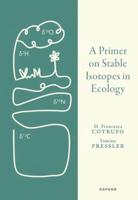Publisher's Synopsis
Ray sets out his 'new' classification of plants in Methodus Plantarum Nova and discusses some basic aspects of their biology. This book is its first English translation: though occupying an important place in the history of Botany, hitherto it has been available only in its original language, Latin.











